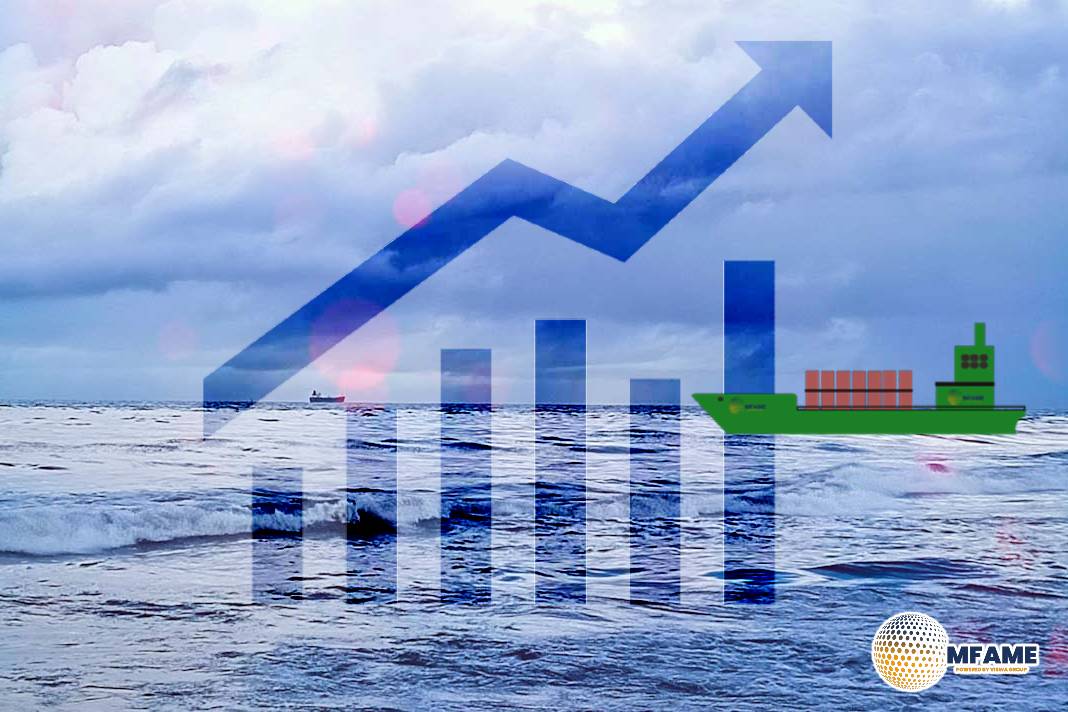Dry bulk shipping is the world’s largest ocean shipping market by volume and boasts the world’s largest freight futures market. After spending most of this year on the sidelines, dry bulk shipping is suddenly back in the spotlight again, reports Freight Waves.
A week that shipowners ‘dream of’
Rates for Capesizes — larger dry bulk vessels with capacity of around 180,000 deadweight tons (DWT) that carry iron ore, coal and bauxite — averaged $54,600 per day on Monday, according to Clarksons Securities, more than triple rates on Nov. 1 of $15,800 per day.
Deutsche Bank analyst Chris Robertson noted that last week’s 71% surge in Capesize rates was “one of the biggest jumps in the spot market in the last decade.”
John Kartsonas, managing partner of the Breakwave Dry Bulk Shipping ETF (NYSE: BDRY), said in an interview with FreightWaves on Monday: “It is not only Capes. It’s across the board. This has been a synchronized rally across every asset class over the last three or four weeks.”
Panamaxes (65,000-90,000 DWT) and Supramaxes (45,000-60,000 DWT) transport grains, coal and so-called “minor bulks” (minerals, steel, etc.). Panamax spot rates reached $21,100 per day on Monday, according to Clarksons Securities, up 53% since Nov. 1. Supramax rates hit $16,400 per day, up 31% over the same period.
Why dry bulk rates spiked in November
One driver of the dry bulk rally — particularly for Panamaxes and Supramaxes carrying U.S. grain exports to Asia — is restrictions at the Panama Canal.
“Everyone has been talking about this since the summer. Now it is finally having an effect,” said Kartsonas. Ships carrying U.S. grain are taking the longer route via the Suez Canal, and bulkers face long delays returning to the Atlantic from Asia via the Panama Canal.
Panama Canal restrictions are compounding fleet inefficiencies caused by months of heavy congestion at Brazilian grain ports. Braemar reported that there are still 113 Panamaxes and geared bulkers waiting to load off Brazilian ports, down from a peak of 168 but more than double levels a year ago.
Is the end of rate spike nigh?
The BDRY exchange-traded fund, which buys near-dated forward freight agreements (FFAs), was down 7% on Monday in almost quintuple average volume.
Dry bulk rates typically hit annual lows in the first quarter. Compared to current rates of over $50,000 per day, the January Capesize FFA contract was trading at just $17,250 per day on Monday, down 17% versus Friday. The February contract was at $10,125 per day, down 8% versus Friday.
Brokerage Thurlestone Shipping said on Monday: “There were some signs of nervousness on the FFA market towards the close of play, with the market taking a bit of a battering. Time will tell whether this is a fundamental shift in sentiment or just profit-taking, but undeniably, things feel a little more nervous here, although the physical fundamentals are still relatively unchanged with tonnage tight everywhere.”
According to Kartsonas, “The belief is clearly that this [rally] is very temporary. And I think that makes a lot of sense. If this was positional tightness that happened because all of these circumstances came together at the same time, it is very easy to see how this is going to unwind. The question is how deep the correction will be.”
Ship brokerage BRS issued a bearish outlook on dry bulk’s 2024 prospects on Thursday. “There has been a general improvement in dry cargo volumes this year, [but] it lacks the robustness that industry participants have grown accustomed to.” Fleet supply growth is outpacing demand growth and there are concerns over China, it said.
“Without tailwinds afforded by one-off disruptive events, we are now confronting ‘darker storms ahead,’” warned BRS.
Did you subscribe to our daily Newsletter?
It’s Free! Click here to Subscribe
Source: Freight Waves






















